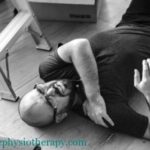What to do in Early Injury Treatment?
- Protect
Protect the injured part for any further damage. This can be achieved by properly supporting the injured area.
- Rest
Rest from painful exercise or movement is essential in the early injury stage. This is called relative/active rest. “No pain. No gain.” does not apply in all cases. The thumb rule is – don’t do anything that reproduces the pain for the initial two to three days.
If unsure of what to do, please contact a Physiotherapist for injury-specific advice.
- Ice
Ice should be used for the initial two or three days (at a time more than that) post-injury. Apply ice for 10-15 mins every two to three hours for the first few days. Ice helps to reduce pain and swelling in all traumatic soft tissue injuries, such as ligament sprains, muscle tears, or bruising. Even in systemic joint pains ice can be used during an acute flare-up stage.
- Heat
Heating the tissue is discouraged during the acute phase of any injury. Once the pain subsides considerably over a period of 4-5 days, hot fermentation can be done; it promotes healing through increased blood circulation. During the initial days, as heat increases bleeding should be avoided.
- Compressive bandage/ support
A compressive bandage or elastic support can be applied to the injured part. It helps control swelling and bleeding in the first few days. It also helps reduce pain as it restricts the excessive movement of tissues around it. Some injuries may require firm support like a brace or rigid strapping tape.
- Elevation
The injured part (mainly the upper or lower limb injury) should be elevated above the heart level to assist drainage of swelling around the affected part.
As the saying “the early bird gets the worm”, the researchers have proved over time that physiotherapy interventions for acute soft tissue injuries within a few days have many benefits.
Early treatment Benefits include
- Quicker pain relief with electrotherapy, soft tissue manipulation techniques, Joint mobilization, etc
- Improving the scar tissue quality using techniques to guide the direction it forms
- Getting back to sports or work quicker through faster healing rates
- Strengthening of injured area with individually prescribed exercises and techniques
- Improving performance with sports, work, or simply daily life
- Correct any biomechanical faults that may be affecting the movement, technique, or predisposition to injury
Research shows that injuries left untreated take a longer time to heal and linger on for more than usual time. It’s more likely to reoccur and have –
- abnormal scar tissue formation
- joint stiffness
- muscle weakness
Note – It’s important to remember that symptoms lasting longer than three months become habitual and are much harder to solve. The sooner its resolve the better is the outcome.





